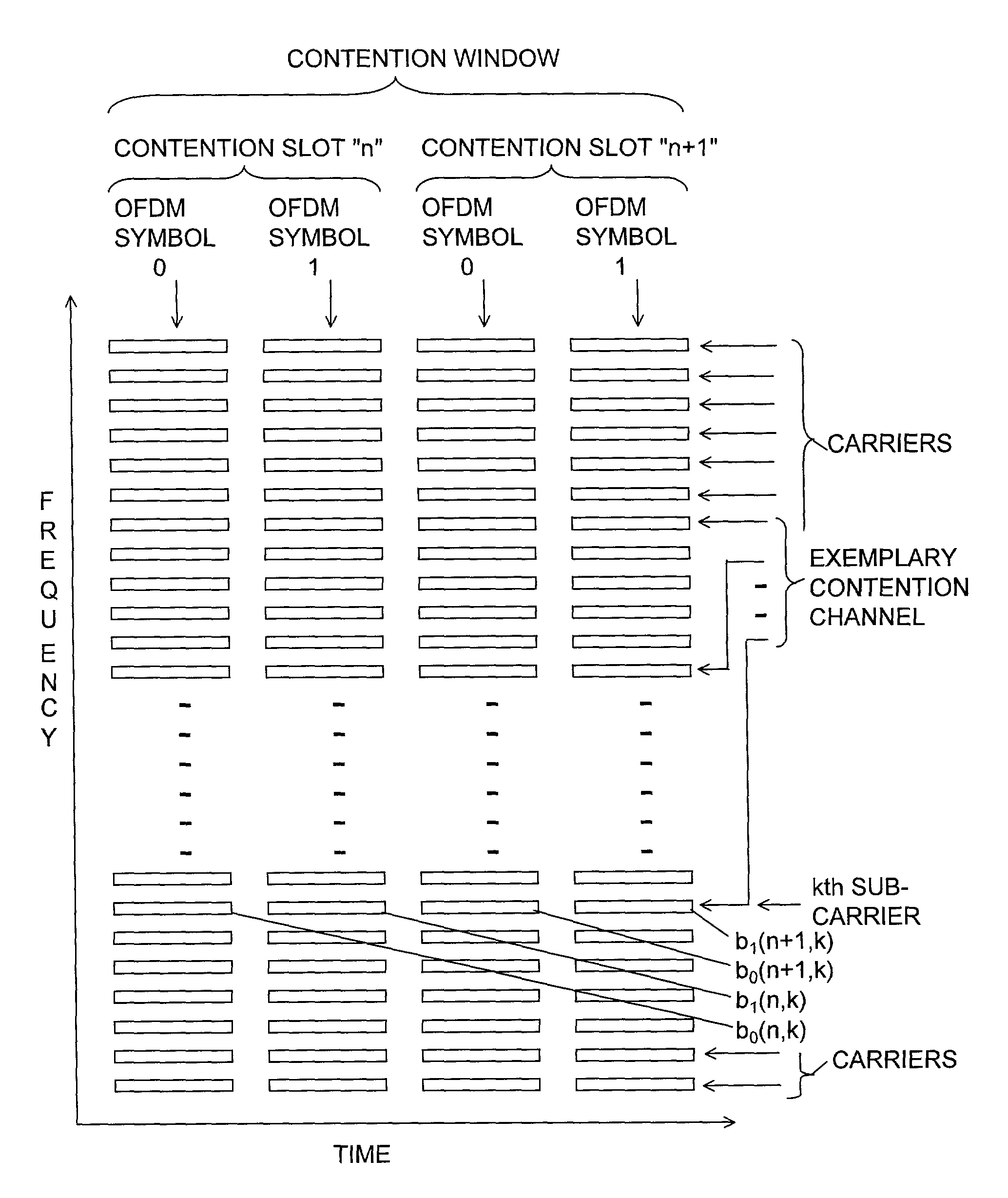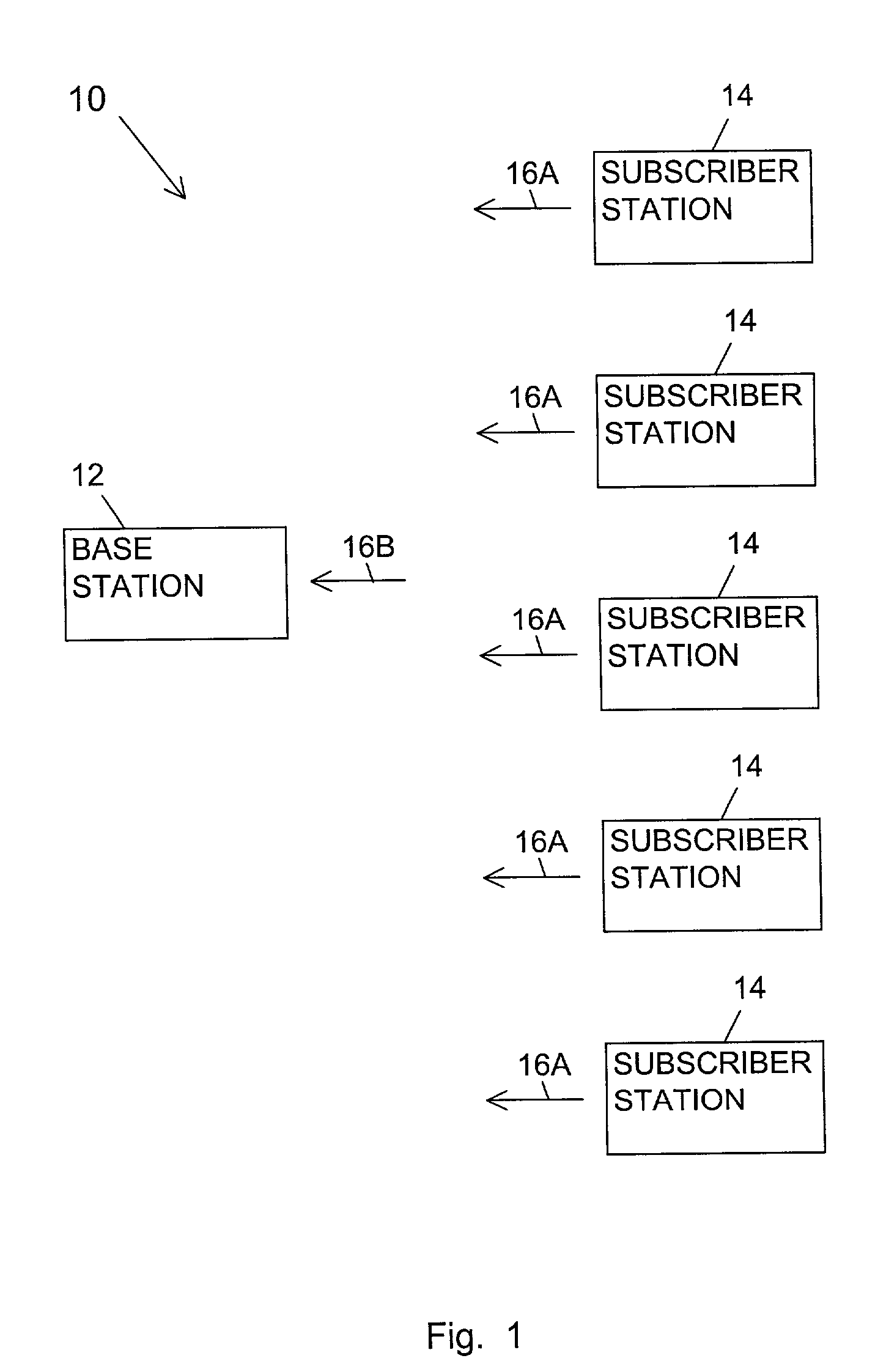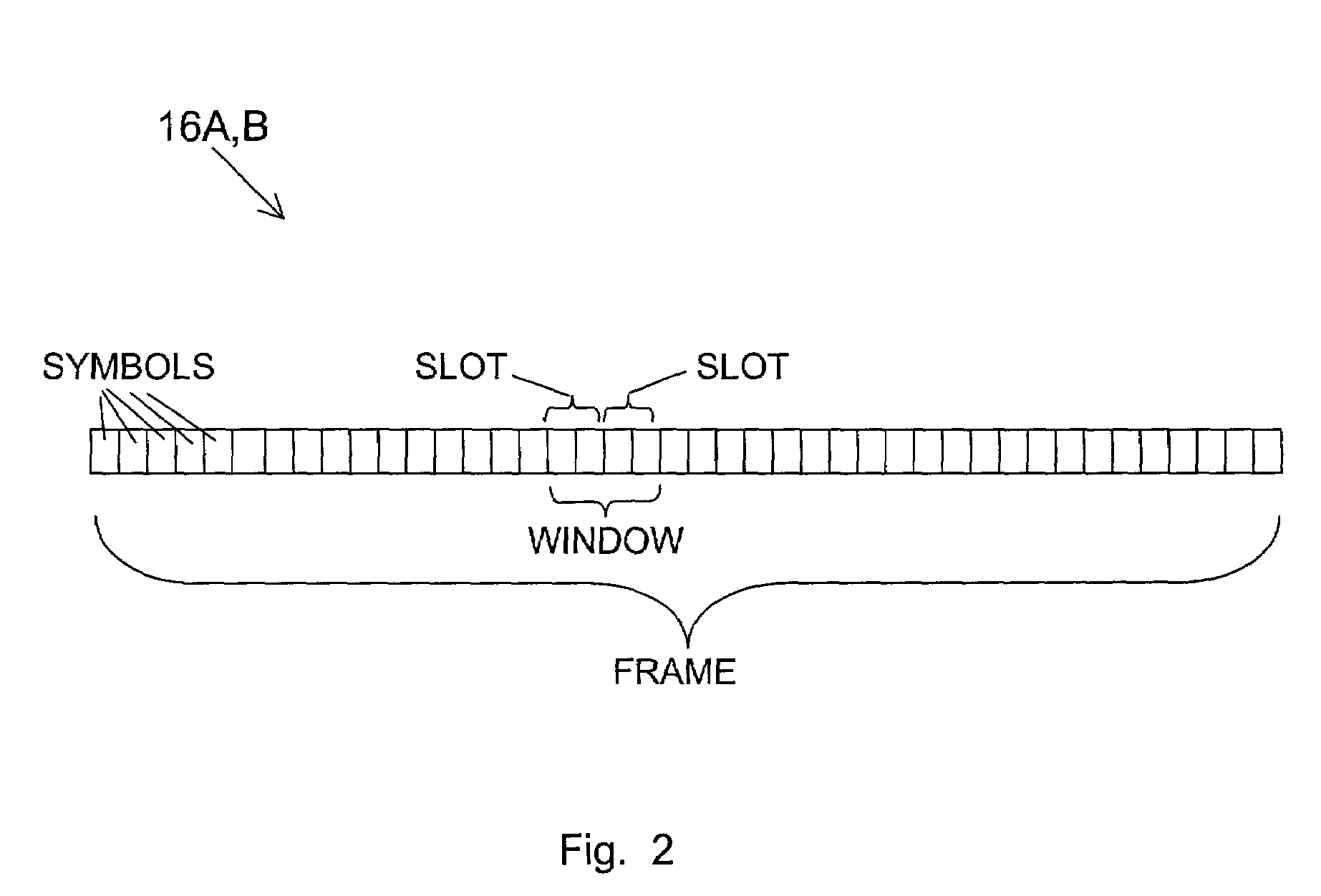Method and apparatus for multiuser access in a multicarrier modulation network
a multi-carrier modulation and access system technology, applied in electrical apparatus, allocation timing, transmission path sub-channel allocation, etc., can solve the problems of inability to meet the requirements of quality of service, inefficient use of total network bandwidth, and inability of access methods to ensure quality of service, etc., to achieve less overhead and more efficiency
- Summary
- Abstract
- Description
- Claims
- Application Information
AI Technical Summary
Benefits of technology
Problems solved by technology
Method used
Image
Examples
Embodiment Construction
[0025]FIG. 1 is a block diagram of a multiple access multicarrier network of the present invention referred to by a reference number 10. The network 10 includes a central office or base station 12 and multiple subscriber stations 14. The subscriber stations 14 request attention from the base station 12 by transmitting uplink service request signals 16A. The service request signals are then received by the base station 12 as a service request signal 16B. The service request signals 16A,B are orthogonal frequency division multiplexing (OFDM) multicarrier signals.
[0026]FIG. 2 is a chart of a frame of the service request signals 16A,B. The frame is made up of successive symbols. A portion of the frame is designated as a contention window. The contention window includes contentions slots. Each contention slot includes a pair of symbols.
[0027]FIG. 3 is a chart of time and frequency for the service request signals 16A,B. In time, the contention window is segmented into contention slots ill...
PUM
 Login to View More
Login to View More Abstract
Description
Claims
Application Information
 Login to View More
Login to View More - R&D
- Intellectual Property
- Life Sciences
- Materials
- Tech Scout
- Unparalleled Data Quality
- Higher Quality Content
- 60% Fewer Hallucinations
Browse by: Latest US Patents, China's latest patents, Technical Efficacy Thesaurus, Application Domain, Technology Topic, Popular Technical Reports.
© 2025 PatSnap. All rights reserved.Legal|Privacy policy|Modern Slavery Act Transparency Statement|Sitemap|About US| Contact US: help@patsnap.com



